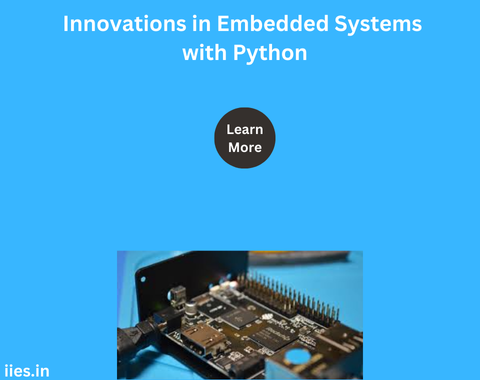
Embedded systems have long been a cornerstone of modern technology, powering everything from household appliances to complex industrial machines. Traditionally, these systems were developed using low-level programming languages like C or assembly due to their need for efficiency and direct hardware manipulation. However, recent advancements in both hardware capabilities and software development tools have opened the door for higher-level languages, such as Python, to play a significant role in embedded systems. This shift is driving innovative changes in how these systems are designed, developed, and deployed.
Python’s rise in the realm of embedded systems can be attributed to several key factors:
Ease of Use: Python’s simple syntax and readability make it an excellent choice for developers. This is particularly beneficial in the embedded systems domain, where development cycles are often long and complex. Python allows for rapid prototyping and testing, which can significantly reduce development time.
Extensive Libraries and Community Support: Python boasts a vast ecosystem of libraries and frameworks that can be leveraged for various embedded system applications. Libraries such as Micro Python and Circuit Python have been specifically developed to bring Python to microcontrollers and other embedded hardware.
Cross-Platform Capabilities: Python is inherently cross-platform, which means code written for one type of system can often be easily adapted for another. This versatility is crucial in embedded systems, where hardware variations are common.
Micro Python and Circuit Python are two of the most significant innovations bringing Python to the world of embedded systems.
Micro Python is a lean and efficient implementation of Python 3 that includes a small subset of the standard library and is optimized to run on microcontrollers. It allows developers to run Python code on devices with limited resources, such as the ESP8266, ESP32, and STM32 microcontrollers.
Circuit Python, developed by Adafruit, builds on Micro Python but focuses on ease of use and education. It simplifies hardware interactions by abstracting complexities, making it accessible to beginners and hobbyists.
These platforms enable developers to write high-level Python code to interact with hardware components, such as sensors and actuators, thus accelerating the development process and expanding the accessibility of embedded systems programming.
The Internet of Things (IoT) and edge computing are areas where Python’s role in embedded systems is growing rapidly. Python’s simplicity and efficiency make it an ideal choice for developing IoT devices that need to perform data collection, processing, and transmission.
Python frameworks such as Flask and Django can be used to create lightweight web servers on embedded devices, allowing them to communicate with other devices and cloud services. This capability is essential for building complex IoT networks where devices must seamlessly exchange data.
In edge computing, where data is processed close to the source rather than in a centralized cloud server, Python’s ability to handle data processing and machine learning tasks efficiently is invaluable. Libraries like TensorFlow Lite and Edge Impulse enable the deployment of machine learning models on resource-constrained devices, allowing for real-time data analysis and decision-making at the edge.
Python’s role in automation and robotics is another area of significant innovation. Robotics often requires integrating various sensors, actuators, and processing units, a task well-suited to Python due to its readability and extensive library support.
Frameworks like Robot Operating System (ROS) have Python interfaces that allow for developing complex robotic systems. Python’s ease of integration with other languages and systems makes it a powerful tool for developing and prototyping robotic applications.
The accessibility of Python has made it a popular choice in the education sector and the maker movement. Platforms like the Raspberry Pi, which supports Python out of the box, have democratized access to embedded systems development. These platforms provide an affordable and user-friendly environment for students and hobbyists to learn about programming and hardware interaction.
Educational tools and kits, such as the BBC micro, also leverage Python to teach programming and electronics basics. This has created a new generation of developers who are comfortable using Python for embedded systems, fostering innovation and expanding the talent pool.
While Python offers many advantages for embedded systems, it also faces challenges, primarily related to performance and resource consumption. Python’s higher-level abstractions can lead to less efficient code compared to low-level languages. However, ongoing improvements in Python interpreters and the development of specialized versions like Micro Python are addressing these issues.
The future of Python in embedded systems looks promising, with ongoing innovations likely to further enhance its capabilities and performance. As hardware continues to evolve, offering more processing power and memory, the gap between the performance of high-level and low-level languages will continue to narrow.
Innovations in embedded systems with Python are transforming the landscape of this field. By bringing ease of use, extensive libraries, and cross-platform capabilities to embedded systems, Python is enabling faster development cycles, fostering creativity, and expanding access to embedded systems programming. As Python continues to evolve and adapt to the unique challenges of embedded systems, it is set to play an increasingly central role in the future of this dynamic field.
Indian Institute of Embedded Systems – IIES